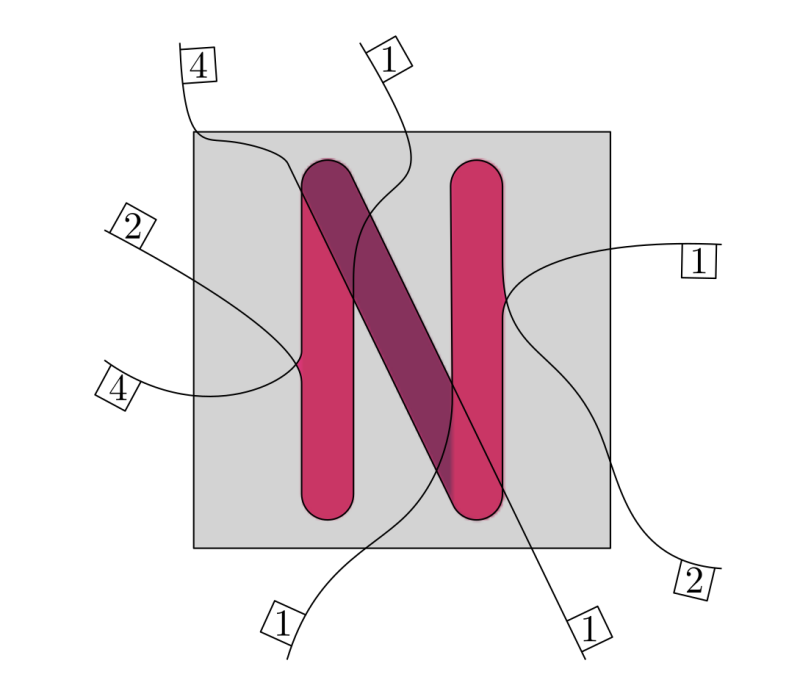If cells advocate against your body, you better find out what they are saying.
Your body is a charity
There are many charities that help the world in positive ways. However, there is one charity you rarely hear anything about: your own body. Inside this charity, many volunteers work together to achieve one goal: keeping you alive. The charity is huge, and despite you literally being the sole subject of it, it is too large for you to have control over all its inner workings.
The volunteers inside the charity are cells. They work in tightly packed cubicles, typing away on their little computers to produce printed messages: proteins. These messages often contain instructions for other cells. If a cell revives a message, they must carry out the instructions on it. The charity’s goal of keeping you alive is so important and complex that there is no room for interpretation and individual freedom. It operates on the assumption that every cell works to your benefit, so there is no need to doubt an instruction.

What happens if you steal from the charity?
A charity should be non-profit, but that does not mean there is no money involved. During the whole process of keeping you alive, your body produces things that individual cells love. This can be seen as the money that gets passed around in the charity. An example of this money are molecules that cells use to get energy. Cells love these sugary treats, and they use it among other things to make more copies of themselves. Despite how much cells crave for money, they are volunteers with pride, and most of the time they can resist the temptation of stealing money for their own gain. It is good that they do, because your body needs to be kept in a constant state of balance: in homeostasis. If cells would steal, homeostasis would be disrupted, and your body might be in danger.
Even though cells are pretty prideful, this does not mean they always behave. Sometimes, a cell decides that the charity is a huge waste of time. They think they are better off alone, and will start acting selfishly, stealing all the money they can get their hands on. This selfish behavior can be initiated in multiple ways, for example by random changes in a cell’s DNA (called mutations), or by faulty instructions in a cell’s DNA inherited from parents.
If cells start stealing, they will send proteins that demand other cells to fork over all the money to them. The selfish cell gets rich, and a nasty side-effect can be that they use part of the money to aggressively create many more copies of themselves. A big, messy, unstructured lump of cubicles will start to appear, all filled with selfish cells. We call this a tumor, and the selfish cells within are called cancer-cells.
A little bit of stealing will not ruin the charity, but what cancer-cells are doing, is just brutal. To put a stop to this stealing, the charity has a similarly brutal set of specialized volunteers: inspectors. Inspectors are the cells of your immune system, and they come in many varieties, like T-cells, natural killer cells, and macrophages.
Inspectors are brutal, since they check what kind of proteins cells are producing. If they do not like what they see, then they will remove the misbehaving cell from the charity immediately. Cancer-cells are often caught by inspectors, since they are sending out proteins actively demanding other cells to give all money to them. Thus, if everything goes smoothly, inspectors remove cancer-cells from the charity in no-time.

Creatively misleading inspectors
Sadly, inspectors can be misled, and selfish volunteers can hide the things they are doing. As stated before, all cells have to obey the commands they get. This is especially true for immune cells, since they have the power to remove people from the organization. Thus, a sly tactic that selfish volunteers can employ, is sending proteins that demand inspectors to stop inspecting. Such proteins are called immune-checkpoints in biology. Their normal function is stopping the immune system when it starts to over-react.
For a cancer cell these checkpoints are great. They force immune-cells to take a break, giving the cancer cells free reign to produce whatever protein they want without anyone checking them. This helps them to steal without being caught. For your body, this is a bad development that needs to be fixed quick.

Silence the cells…but how?
When your charity is in danger, you go find external help. In case of your body, this means going to the doctor. She can inform you of a wonderful technique: blocking certain messages from being sent. In essence, she hopes to block the messages that benefit the cancer-cells whilst not blocking any messages that useful cells send. This is the idea behind one type of cancer-treatment: immunotherapy.
There is, however, a catch. It is not always clear what the intention behind a message is. You will rarely see messages that are blatantly bad like “please stop checking me mister immune cell, because I am a cancer-cell that would like to continue stealing money”. More often than not, messages are ambiguous or influence immune cells indirectly. This shows that for immunotherapy to be effective, it is not enough to known which cell-types send which message types. You need to know the way in which individual cells send messages to each-other to grasp to context behind each message. Only then can the doctor target the “bad” messages. In other words, we need to measure the communication network of cells. Sadly, measuring the complete network of cells and the messages they send to one-another is no easy task. Even worse, we need to act quick; every hour we don’t intervene in the communication network, the condition of a patient might worsen.
What can we measure from your body?
It is quite difficult to extract information from your body. Your body is so vast that millions upon millions of messages get sent and deleted every second. It is impossible to know exactly who said something. The doctor’s main challenge is finding a way to reconstruct the network of interacting cells given the limited information she can measure.
Information about a tumor is often extracted from your body by removing a small part of its cells. This is called taking a biopsy. Inside this biopsy there is a large number of messages and cells we can measure in a machine. By doing this, the doctor can get a rough estimate of the number and type of messages present inside a tumor. She will know how often certain messages are sent inside a tumor, and how many of the cells are “normal” cells, cancer cells and immune cells. Note, however, she does not know which cells have sent each message.
Despite the doctor not knowing which cells said which messages, there are some extra context clues available to find this out. It turns out that each cell-type has its own list of proteins that it can produce and understand. A cell simply cannot send nor understand everything. We call this list the compatibility matrix. Using this list per cell-type, the number of cells of each cell-type, and the number of messages of each type, the doctor has to reconstruct the communication network of cells. The question now becomes: how can she do this?
How can you know who said what without knowing who said what?
Mathematics can often help. What the doctor can try, is constructing many communication networks that are in line with the information she has. If there are certain things among these networks that remain the same, then these things tell you something about the way cancer-cells like to communicate. The doctor uses the following procedure to do this:
Generate a bunch of messages based on the info you have about the number of messages.
Generate a virtual list of cells based on the knowledge you have about the number of cells with a given type.
- Pair each message randomly to cells that might have said them in two steps:
- From the compatibility matrix, identify the cells that could have said the message and pick one of them at random. This cell is the sender.
- Again, from the compatibility matrix, identify the volunteers that could have understood the message, and pick one of them at random. This is the recipient.
- From the compatibility matrix, identify the cells that could have said the message and pick one of them at random. This cell is the sender.
- Again, from the compatibility matrix, identify the volunteers that could have understood the message, and pick one of them at random. This is the recipient.
After doing this for every message, the doctor has constructed a possible communication network that is in line with all information the doctor measured (see the figure below). She can now analyze this network (and possible other networks she will make later) to see which messages are smart to block.

She starts by considering to block the message “take my money”, but concludes it is not the smartest to block. She noticed that both cancer cells and normal cells send this message. Maybe some want to steal money and others just really need the money to buy something for the charity. Then, she consider the message “take a break”, and concludes this is also not smart to block. Yes, it is only used by cancer cells, but its recipients are all hardworking volunteers. Maybe blocking this message will disrupt other vital processes in the charity: everyone should take a break sometimes. Finally, she sees the message “wave your hands” and she knows this is the one. Only cancer cells use it to communicate, and it is not in the middle of vital processes. Blocking this message might disrupt the stealing cancer cells.
The charity’s way back to being charitable again
The doctor blocks the message “wave your hands”, and it turned out to be the right call. Cancer-cells used this message to divert attention away from them, and make normal cells do something suspicious worth checking. Now this distraction is gone, and the immune cells see the cancer cells for what they really are. They get removed from the charity, the thievery stops, and the selfless working picks up once more. You as the main beneficiary of this charity can rest assured knowing that everything is back to normal. However, before you know it, new threats might emerge that seek to steal from your charity in another clever way, and maybe then it won’t be so simple…






